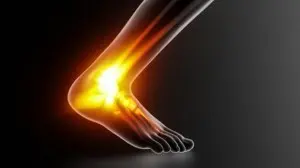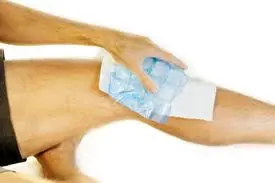Now that the fall sports season is upon us, the chance of suffering a joint sprain increases. RICE (Rest, Ice, Compression, Elevation) has been the gold standard treatment for years following an injury. The purpose of the RICE protocol was to slow the bleeding and swelling in ligament sprains and thus speed up the healing process. However, recent evidence has been published making us re-think this widely used protocol. The National Athletic Trainers’ Association (NATA) published a statement in August 2013 on the management of ankle sprains that reviewed and graded current treatments based on the clinical evidence. In that statement they gave the use of ice a C rating. In another study published by American Journal of Sportsmedicine in January 2004, ice was shown to have minimal effectiveness in treating soft tissue injuries.

Inflammation is actually a good thing
The human body is an incredible machine and has the ability to heal itself if given the opportunity to do so. One of the ways the body heals after a ligament injury such as an ankle sprain is to send in inflammatory cells that promotes the healing. Thus inflammation is how our bodies can repair the damage. Ice applied near the injury causes the blood vessels to constrict. This will slow or stop the blood flow and may actually inhibit the healing process in an injury. It can take several hours after the ice is applied for the blood vessels to the injured tissue to open back up. This can result in the death of the tissue and may even cause nerve damage. Anything the stops or reduces the inflammation such as the use of ice can slow the healing.
Avoid the Use of NSAIDs
Non-steroidal anti-inflammatory medication (NSAIDs) such as ibuprofen also inhibit the inflammatory process and can slow the healing. Instead of ibuprofen use Tylenol to control pain.
Relative Rest
Complete rest can also inhibit the healing process as well. Our joints are designed for movement and movement equals life. After an ankle sprain or ligament injury the tendency is to not move the joint. However, this can result in the early formation of scar tissue. Due to the extent of the ligament sprain, unrestricted movement is not advised either. Instead of complete rest, the term more appropriate is relative rest. Relative rest is controlled movement of the injured joint that is safe, stimulates blood flow, and prevents the formation of scar tissue. These are movements that are prescribed by a physical therapist.

Compression and Elevation
The use of compression and elevation can still be helpful in the immediate treatment of ligament sprains. The light application of compression can help to avoid uncontrolled joint swelling which will limit the ability to move and can result in increased pain. Elevating the injured joint above the level of the heart can also be helpful in the immediate treatment the joint sprain.
What Should You Do?
If you suffer a ligament sprain such as an ankle or knee sprain, stop the activity immediately. If possible, elevate the injured part and use a light ace wrap or compression bandage to minimize the swelling. Since applying ice has been shown to decrease pain, it is ok to use ice for a short period of time immediately after the injury. I would recommend that you use ice no longer than 10 minutes, remove it for 20 minutes and then reapply once. You should not apply the ice more than 8 hours after the injury. If the injury is extensive, you should see a doctor to rule out a fracture. Most minor injuries can start moving the next day as long as the movement does not increase pain. If you continue to have pain and are unable to return to your sport our therapists specialize in getting you back in the game as soon as possible. Find relief and get back into action. Call 1-800-930-8803 today.


